Sea lions and seals: they’re pretty much the same, right? Wrong! Although seals and sea lions have a lot in common, there are also a few things that set them apart – from their size and weight to the colour that their pups are when they’re first born.
Of course, it’s easy to see why so many people view sea lions and seals as the same – they’re even part of the same species family, a group known as Pinnipedia. So, what is it that separates the two? And what are the characteristics of each animal that you need to know?
That’s what we’re here to find out. Since Tynemouth Aquarium is home to seals, our experts are well-placed to fill you in on the key differences between them and their distant sea lion relatives.
Seals vs Sea Lions: Fast Head-to-Head Facts
Get to know the key, top-line differences between seals and sea lions with our essential fact file below…
- Seals belong to the Phocidae family, while sea lions belong to a group called Otariidae
- There are 19 species of seals and seven species of sea lions
- Seals have ear holes only whilst sea lions do have small external ear flaps
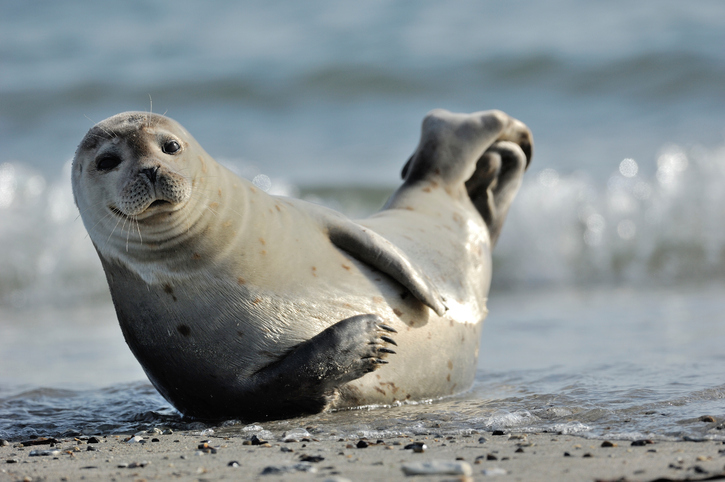
What Makes Seals and Sea Lions Different?
OK, so while they may look relatively similar, there are actually a surprising number of differences between seals and sea lions. Our head-to-head comparison guide below should fill you in on everything that sets these amazing creatures apart.
Size and Weight
One of the biggest differences between seals and sea lions comes when you start comparing them pound for pound.
Taking our native harbour seal as an example; these animals typically weigh an average of 90-140kg depending on their sex. Some Sea lion species, meanwhile, typically weigh in at 100-360kg – with a significant size and weight discrepancy between male and female animals.
Flippers
Although both seals and sea lions belong to the Pinnipedia species class – which refers to their webbed flipper footed – the animals are broken down into different subgroups known as Phocidae (seals) and Otariidae (sea lions). This evolutionary divide sets the animals apart in lots of different ways – not least in the appearance and function of their flippers.
You see, while seals typically have short, hairy fore flippers, sea lions have much longer front flippers that are totally hairless. Their hind flippers are different, too; those of the seal point outward and cannot rotate under the body, movement on land resembling an inchworm or bouncing water balloon, while sea lions are able to rotate theirs under its body to walk on land at a decent speed.
These distinct flipper characteristics might not sound all that important, but they have a huge influence on typical behaviour and characteristics.
Owing to their longer and more flexible flippers, sea lions spend much more time on land than their seal counterparts and can be seen walking and even running! Seals are considerably less mobile on land, but the fish-like motion of their rear flippers help them to glide through the water at remarkable speeds.
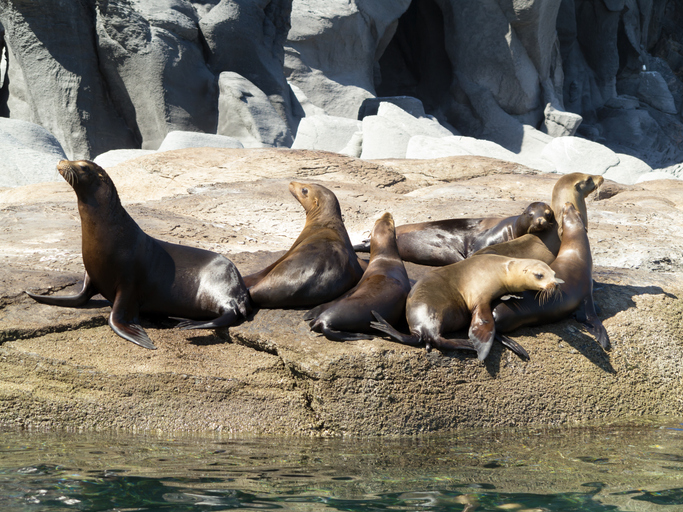
Ears
Another key characteristic that sets seals and sea lions apart are ears – or the lack of them! While sea lions have small ear flaps, seals instead have ear holes. That’s despite both animals relying on their acute hearing to detect prey and evade predators.
As with their flippers, seals and sea lions owe the characteristics of their ears to evolution. It’s believed that seals (Phocidae) descend from weasel-like ancestors, while sea lions (Otariidae) stem from an early species of semi-aquatic bear. This could go some way to explaining why seals have evolved to have no ears, while sea lions have retained theirs.
Spot the Difference
Sure, seals and sea lions look relatively similar at first glance, but stand these animals side by side and obvious differences in appearance become apparent. Here are a few things you might spot when comparing a sea lion with a seal – using the California sea lion and harbour seal as example species.
- Sea lions have considerably longer whiskers than seals, with a more elongated, protruding snout.
- Seals typically have spotted coats ranging in colour from white to grey, black to brown. Sea lions, meanwhile, are usually always brown, with the males being a darker shade than females.
- The front flippers of the harbour seal are hairy and clawed, while the same flippers of the California sea lion are clawless and hairless, though much longer than their seal cousins.
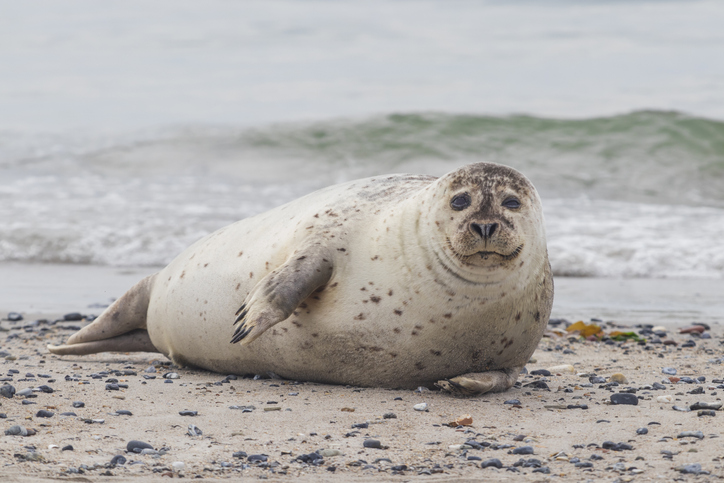
Diet, Behaviour and Other Characteristics
We’re reaching the end of our head-to-head seal vs sea lion comparison now, but there are a few things left that it’s important to tick off. These subtle but no less important differences mainly concern behaviour and diet, including…
- Sea lions are more social than seals, preferring to live in larger groups wherein males compete for dominance and may court up to 15 females at a time. Seals, on the other hand, are much more solitary.
- Sea lions are very noisy compared to seals, which vocalise with softer and gentler grunts than their boisterous Otariidae cousins.
So, there you have it, a flipper-to-flipper look at the differences between seals and sea lions. Of course, one of the main differences that we’ve failed to touch on so far is that sea lions aren’t native to the UK, so you’re unlikely to ever see one in the wild. Seals, on the other hand, are a regular fixture of the British coastline, with both harbour seals and grey seals found all around our shores.
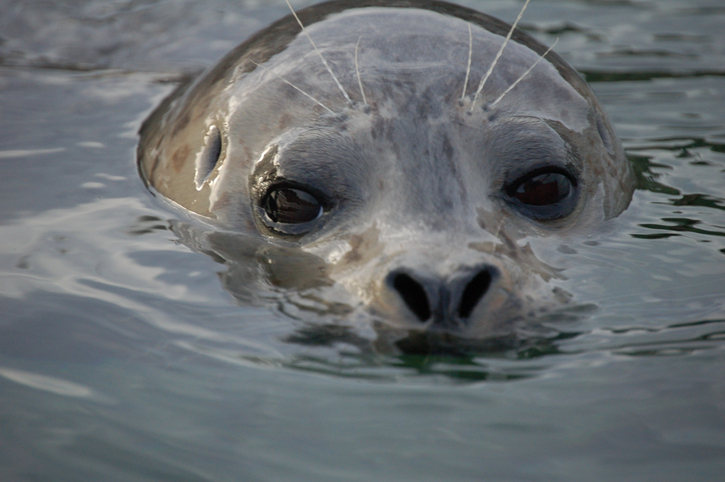
Seals on Show at Tynemouth Aquarium
Those familiar with Tynemouth Aquarium will know just how popular our Seal Cove exhibit is. With over 800,000 litres of water and a series of man-made islands, underwater caves, and diving pools, this is the ultimate place to get up close to our resident harbour seals, of which there are four unique animals to see, including:
- Marvolo: The largest and friendliest resident of Seal Cove, Marvolo is known for his trademark ‘M’ pattern on his forehead, not to mention his enormous splashes! He’s an affectionate guy that likes putting on a show and is also father to three seal pups including Calypso, our youngest seal.
- Sofus: Meet Sofus, our lazy lad that you might spot rolling around Seal Cove as opposed to flopping on his belly. Almost as big as Marvolo but not quite, Sofus likes to do as little as possible throughout the day. Spot him by the diamond-shaped mark between his eyes.
- Loffe: The oldest resident of Seal Cove; Loffe is our dominant female, though she rarely exerts any influence over other animals in the enclosure. Shy and intelligent, Loffe likes to stay in the background, though she does have a penchant for jumping and waving – skills she learnt all by herself.
- Calypso: Calypso is our lovely youngster, born right here at Tynemouth and daughter to Marvolo. Playful and curious, she loves the limelight and isn’t afraid to photobomb those selfies! Calypso is also great at ‘porposeing’ – a curved jump our seals perform out of the water to take a breath while swimming.
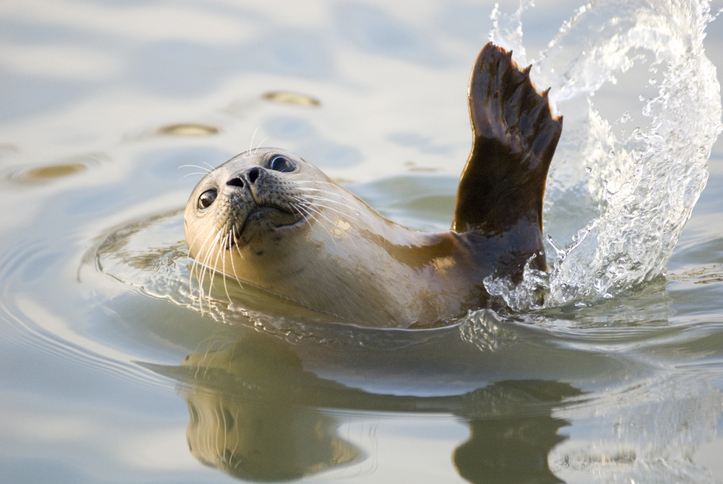
Protecting Seals on Our Shores
As well as loving and caring for our four Seal Cove residents, the team here at Tynemouth Aquarium also helps to protect and safeguard wild animals found in the local region. Our purpose-built Seal Hospital features four pens for treating sick and injured seals, a few of which are open and available for public view.
Be sure to visit our dedicated Seal Hospital page to learn more about our vital work protecting the wild seals found on our shores.
We hope you’ve enjoyed this fascinating look into the interesting differences between sea lions and seals. Why not start planning your next visit to Tynemouth Aquarium to see these amazing creatures for yourself?
